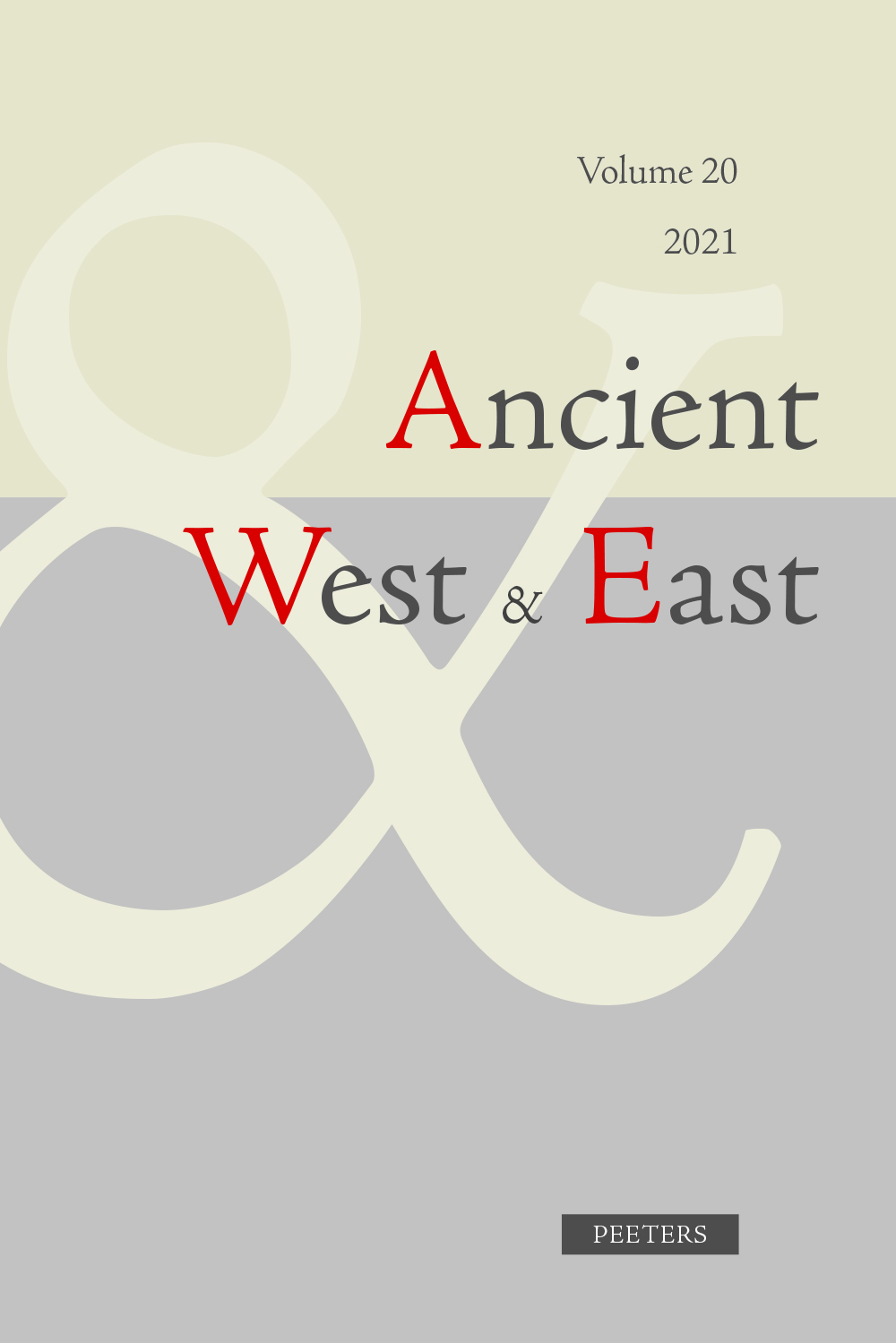 previous article in this issue previous article in this issue | next article in this issue  |

Preview first page |
Document Details : Title: A Crater Fragment with Partridges from Oluz Höyük, Central Black Sea Region, Turkey Author(s): DÖNMEZ, Şevket Journal: Ancient West & East Volume: 10 Date: 2011 Pages: 339-347 DOI: 10.2143/AWE.10.0.2141829 Abstract : When Eurasian nomads entered Anatolia in the late 8th century BC, they caused a chain of events that led to the collapse of the Phrygian kingdom and a disturbance in other strong states of the period, the Lydian and Urartian kingdoms and the Assyrian empire. As a result, an innovative phase in central Anatolian pottery workshops occurred in the Late Iron Age. The influence of the cultures of these nomads and of the Medes and Achaemenids was reflected in pottery by the use of new or changing figures and motifs. The partridge, one such new figure, was revealed during our excavation in the third architectural level of Amasya-Oluz Höyük, and the Oluz Höyük partridge and its analogues in Anatolia are observed on both pottery and terracotta revetment plaques, in the form of single figures or rows. The image of the partridge in central Anatolian settlements of the 6th–4th centuries BC indicate that a common ornamental fashion emerged in central and western Anatolia during this period. |
|


